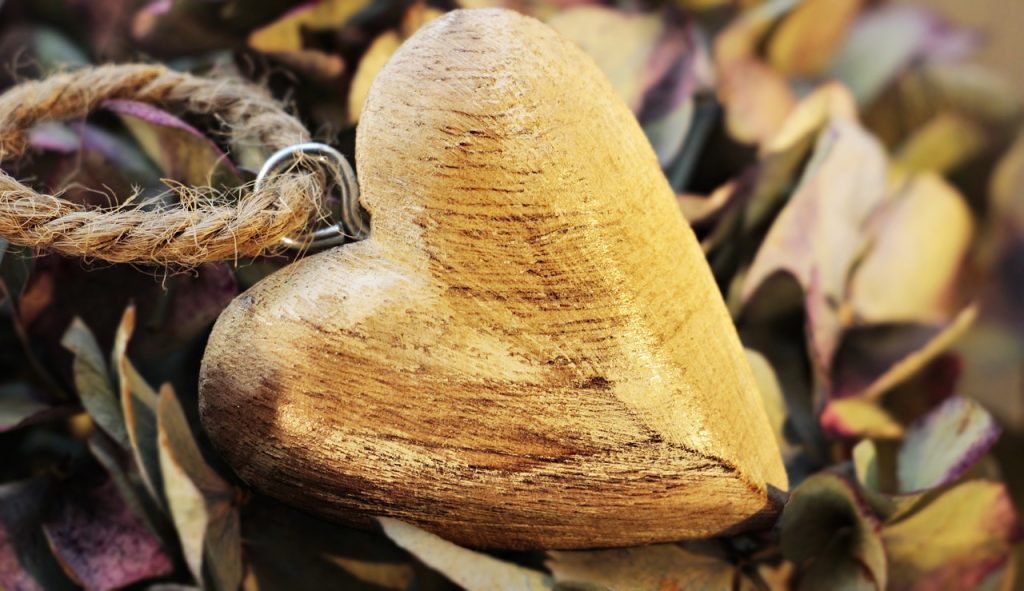If you’re someone who is on a journey to become a better version of yourself and find happiness and harmony within, then you’ve come to the right place. In this article, we’re going to explore the power of gratitude journaling and how it can help you cultivate thankfulness in your life. So, grab a pen and a notebook, because we’re about to dive into a step-by-step guide that will take you on a transformative journey of self-discovery and gratitude. Get ready to unlock the potential within you and embrace a life of gratitude.

This image is property of pixabay.com.
What is Gratitude Journaling?
Understanding the concept of gratitude
Gratitude is a powerful practice that involves acknowledging and appreciating the positive aspects of your life. It is about recognizing and being thankful for the good things, big and small, that you have experienced or have in your life. Gratitude journaling is a specific technique that allows you to cultivate gratitude by regularly writing down the things you are grateful for.
Defining gratitude journaling
Gratitude journaling is the act of keeping a journal or notebook specifically dedicated to expressing gratitude. It involves writing down the things you are grateful for on a daily or regular basis. The practice can be as simple as listing a few things each day or as detailed as reflecting on specific experiences and feelings of gratitude.
Why Practice Gratitude Journaling?
Benefits of gratitude journaling
Gratitude journaling offers numerous benefits that can significantly enhance your overall well-being. By consciously focusing on the positive aspects of your life, you cultivate a mindset of gratitude that can lead to increased happiness, better relationships, and improved mental and physical health. Regularly engaging in gratitude journaling has been shown to reduce stress, increase optimism, and promote a greater sense of self-worth.
How gratitude journaling enhances well-being
Gratitude journaling enhances well-being by shifting your focus from what is lacking in your life to what is already present and positive. It allows you to reframe your thinking and develop a more positive outlook on life. When you consistently practice gratitude and acknowledge the good things, you become more aware of the abundance in your life and are less likely to take things for granted. This, in turn, can lead to increased happiness, satisfaction, and overall well-being.

This image is property of pixabay.com.
Getting Started with Gratitude Journaling
Choosing a journal
To start your gratitude journaling practice, the first step is to choose a journal or notebook that resonates with you. It can be a simple notebook, a fancy journal with inspiring quotes, or even a digital journaling app. The key is to select something that you feel comfortable using and fits your personal style.
Selecting a regular time
Establishing a consistent routine is crucial for maintaining a gratitude journaling practice. Choose a regular time each day that works best for you. It can be in the morning after waking up, during a break in the afternoon, or in the evening before bed. Consistency is key, so select a time that you can commit to on a daily basis.
Creating a quiet and comfortable space
Find a space where you can comfortably sit and reflect without distractions. It can be a cozy corner in your home, a peaceful park, or anywhere that allows you to fully focus on your gratitude practice. Creating a quiet and comfortable space helps to foster a sense of calm and allows you to fully immerse yourself in the practice of gratitude journaling.
Setting Intentions for Gratitude Journaling
Clarifying your purpose
Before you begin your gratitude journaling practice, take some time to clarify your purpose. Ask yourself why you want to engage in this practice and what you hope to gain from it. Understanding your motivations will help you stay committed and focused on your gratitude journey.
Identifying what you want to focus on
Consider what aspects of your life you want to focus your gratitude on. It could be anything from personal achievements, relationships, nature, or even small moments of joy. Identifying specific areas of focus allows you to deepen your gratitude and helps you in selecting appropriate prompts and journaling formats.

This image is property of pixabay.com.
Selecting a Journaling Format
Traditional journaling
Traditional journaling involves simply writing down your thoughts, feelings, and experiences related to gratitude. You have the freedom to express gratitude in any way you choose, whether it’s through narratives, bullet points, or poetry. This format allows for creative expression and can be tailored to your personal writing style.
Structured prompts
Using structured prompts can be helpful if you prefer a more guided approach to gratitude journaling. Prompts provide specific questions or themes to reflect upon and write about. They can range from asking about three things you are grateful for that day, to reflecting on positive experiences or expressing gratitude towards others. Prompts can help kickstart your writing and provide a framework for your journal entries.
Bullet journaling
Bullet journaling combines elements of traditional journaling with a more structured format. It involves using bullet points, symbols, and short phrases to quickly jot down reflections on gratitude. This format is particularly useful if you prefer a concise and organized approach to journaling.
Establishing a Daily Practice
Committing to regular journaling
Consistency is key when it comes to gratitude journaling. Commit to setting aside a few minutes each day to write in your journal. It can be helpful to establish a specific goal, such as writing for at least five minutes or filling a certain number of pages. By making journaling a daily habit, you will be more likely to experience the long-term benefits of the practice.
Overcoming obstacles
Life can get busy, and it’s easy to let your gratitude journaling practice slip. When obstacles arise, it’s important to recognize them as opportunities for growth. If you find yourself lacking motivation or time, remind yourself of the positive impact gratitude journaling has on your overall well-being. Be flexible in your approach and find ways to adapt your practice to fit your current circumstances.
Setting reminders
If you struggle with consistency, setting reminders can be a helpful strategy. Use alarms on your phone, sticky notes, or other tools to prompt you to engage in your gratitude journaling practice. Daily reminders will keep gratitude at the forefront of your mind and make it easier to integrate the practice into your daily routine.
Choosing Prompts for Gratitude Journaling
Listing three things you’re grateful for
A simple and effective prompt is to list three things you are grateful for each day. These can be big or small, significant or seemingly insignificant. By regularly identifying and focusing on what you are grateful for, you train your mind to notice and appreciate the positive aspects of your life.
Reflecting on positive experiences
Another prompt is to reflect on positive experiences from your day. Take a few moments to recall moments of joy, kindness, or achievement that you experienced. Write about how these experiences made you feel and express gratitude for them. This prompt helps to reinforce positive emotions and creates a greater sense of appreciation.
Expressing gratitude towards others
Consider dedicating some journal entries to expressing gratitude towards specific individuals in your life. Write about the ways they have positively impacted you or express gratitude for their presence. Acknowledging the people you are grateful for helps to strengthen your relationships and fosters a sense of connection and appreciation.
Exploring Different Writing Techniques
Freewriting
Freewriting involves writing continuously for a set period of time without worrying about grammar, punctuation, or structure. This technique allows your thoughts and feelings to flow freely onto the page without judgment. By engaging in freewriting as part of your gratitude journaling practice, you can tap into your subconscious thoughts and uncover deeper layers of gratitude.
Stream of consciousness
Similar to freewriting, stream of consciousness writing involves allowing your thoughts to flow without interruption. However, unlike freewriting, stream of consciousness writing is not time-constrained. It involves writing without consciously directing your thoughts, letting the words flow naturally. This technique can reveal unexpected insights and help you discover new aspects of gratitude.
Writing letters to express gratitude
A unique approach to gratitude journaling is to write letters expressing gratitude to others, even if you don’t intend to send them. Choose someone you are grateful for and write a heartfelt letter expressing your appreciation. This writing technique allows you to fully articulate your thoughts and feelings of gratitude, and can be a powerful way to deepen your practice.
Reflecting and Reviewing Your Entries
Periodically reviewing past entries
Every so often, take the time to review your past gratitude journal entries. This reflection allows you to see how your practice has evolved over time and provides an opportunity for self-reflection. Notice any patterns or recurring themes in your entries, as well as any shifts in mindset or perspective. Reflecting on past entries can reinforce your practice and provide insights into your personal growth.
Noticing patterns and shifts in mindset
As you review your past entries, pay attention to any patterns or changes in your mindset. Are there certain topics or themes that consistently arise in your gratitude journaling? Have you noticed a shift in your overall outlook on life or an increased sense of gratitude? Being mindful of these patterns and shifts can help you gauge the effectiveness of your gratitude journaling practice.
Taking Gratitude Beyond the Journal
Incorporating gratitude in daily life
Gratitude journaling is just one way to cultivate gratitude in your life. Extend your practice beyond the journal by actively seeking opportunities to express gratitude in your daily life. Take a moment each day to acknowledge and appreciate the people, experiences, and things that bring you joy and gratitude. By incorporating gratitude into your daily routine, you will continue to strengthen your gratitude mindset.
Expressing gratitude to others
Share your gratitude with others by expressing appreciation directly to them. Whether it’s through a heartfelt thank-you note, a kind word, or a simple act of kindness, letting others know you are grateful for them can have a profound impact. By expressing gratitude to others, you not only deepen your own gratitude practice but also contribute to positive connections and relationships.
Practicing mindfulness and gratitude
Integrate mindfulness into your gratitude practice by being fully present and aware of the present moment. As you engage in your gratitude journaling, take a moment to pause, breathe deeply, and fully immerse yourself in the experience. Pay attention to the sensations, thoughts, and emotions that arise during the practice. By combining mindfulness with gratitude, you can deepen your appreciation for the present moment and cultivate a greater sense of inner peace.
In conclusion, gratitude journaling is a powerful practice that can transform your life. By regularly acknowledging and appreciating the positive aspects of your life, you cultivate a mindset of gratitude that enhances your overall well-being. Start your gratitude journaling journey today and unlock the many benefits it has to offer. So grab your journal, find a quiet space, and begin cultivating thankfulness one entry at a time.


